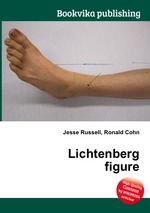Lichtenberg figure
Jesse Russell Ronald Cohn
бумажная книга
High Quality Content by WIKIPEDIA articles! Lichtenberg figures (Lichtenberg-Figuren, or "Lichtenberg Dust Figures") are branching electric discharges that sometimes appear on the surface or the interior of insulating materials. They are named after the German physicist Georg Christoph Lichtenberg, who originally discovered and studied them. When they were first discovered, it was thought that their characteristic shapes might help to reveal the nature of positive and negative electric "fluids". In 1777, Lichtenberg built a large electrophorus to generate high voltage static electricity through induction. After discharging a high voltage point to the surface of an insulator, he recorded the resulting radial patterns in fixed dust. By then pressing blank sheets of paper onto these patterns, Lichtenberg was able to transfer and record these images, thereby discovering the basic principle of modern Xerography. This discovery was also the forerunner of modern day plasma physics. Although Lichtenberg only studied 2-dimensional (2D) figures, modern high voltage researchers study 2D and 3D figures (electrical trees) on, and within, insulating materials. Lichtenberg figures are now known to be examples of fractals.


